This challah has a great flavor, a light and airy crumb, and the dough is easy to work with. This challah is made with a firm sourdough starter as a sort of pate fermente (old dough) to condition the dough, giving it more moisture, a longer shelf life, and great elasticity.
I usually make this dough about once a month and shape the batch of dough into four small challahs for future Shabbat dinners. This size is just perfect for our family at dinner. The larger challah above was made for a religious school pot luck dinner.
This giant seeded challah was made from a double recipe for a bar mitzvah. This is the maximum size my oven and baking sheets can handle.
I took pictures this time of almost all the steps:
This is how my firm starter looks when freshly fed and ready to be refrigerated:
I feed 20 grams of old starter with 40 grams of water and 60 grams of flour (1:2:3 feeding ratio) and knead it until the flour is well incorporated. Then it goes into the fridge for up to a month.
This is how the starter looks after a month in the fridge. I take it out the evening before baking and let it sit on the counter until morning.
By morning, the starter has doubled and softened into this:
The starter is weighed out and mixed with water, then allowed to sit for 30 minutes to soften and dissolve.
The rest of the dough is mixed, kneaded, and set aside to for the first stage of bulk fermentation.
I mark the time on the outside of the bucket with a dry erase marker.
After an hour and a half, the dough was ready for the first of what Rose calls “business letter folds”. (These are more commonly referred to as “stretch and folds”).
Note that I do not put any extra flour on my marble board. The bucket the dough rose in was sprayed with olive oil, and there’s just enough oil clinging to the dough to keep it from sticking. After the stretch and folds, the dough undergoes a second bulk fermentation.
For a single challah, I divide the dough into six equal balls. Each ball is flattened and rolled tightly into a tapered rope (Aaaggghhh! I forgot to take a picture of the rope). Note that before rolling it out into a rope I tightly pinch the seam just as you would do for a baguette.
This challah is a six strand braid. I always need to follow directions for a six strand braid, I can never remember how to do it.
I give the dough two egg washes. One immediately after shaping, the second after the dough has risen, right before baking.
The challah is ready when it’s nicely browned and the inner temperature measures at least 185 degrees Fahrenheit.
Sorry, no crumb shot—this challah will be frozen until the potluck on February 5th. I wrapped it tightly in foil and then plastic cling wrap before freezing. On the appointed day, I will remove the challah from the freezer in the morning, leaving it tightly wrapped. It will thaw slowly on the counter. The theory behind leaving it wrapped is that the condensation from the thawing bread will be reabsorbed by the bread after thawing is complete. This way the thawed bread will not be dried out. For that freshly baked taste, place the challah—loosely wrapped in foil--in a medium oven (320 – 350) for 10 to 15 minutes.
Taken one step at a time, nothing here is difficult—and the results are spectacular! Give it a try.
[Submitted to Wild Yeast's Blog for her Yeast Spotting Page]
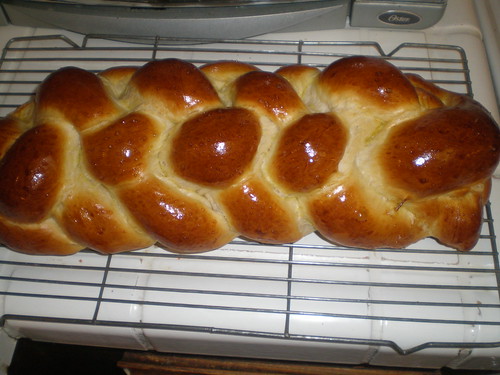
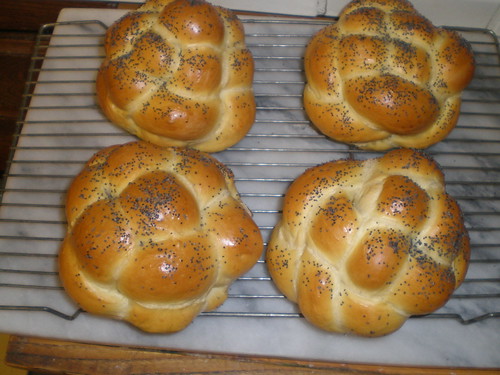






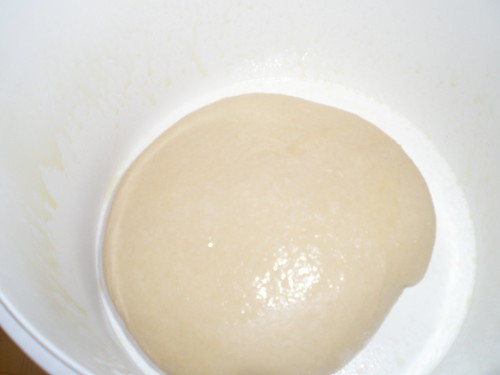
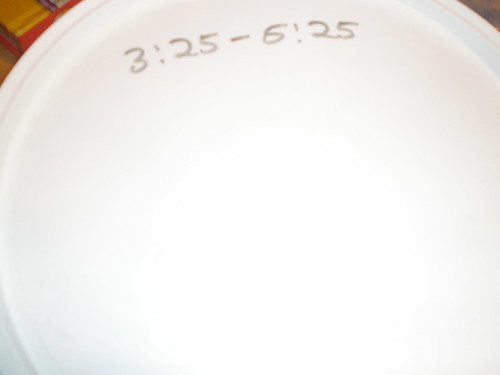





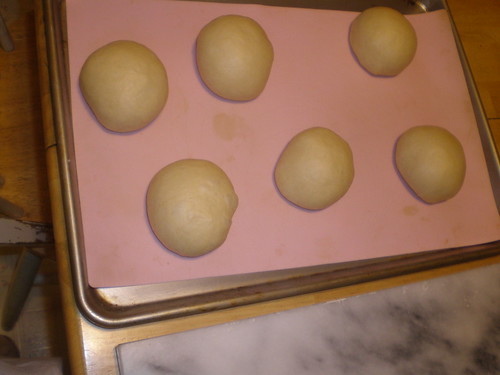



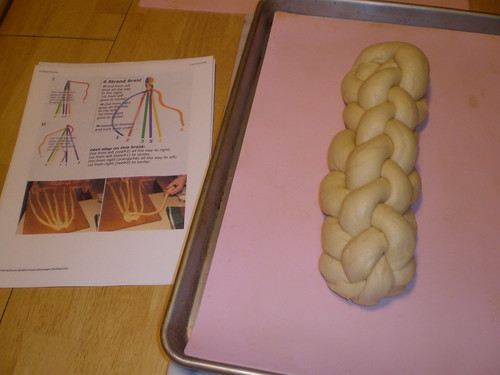

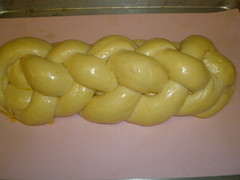
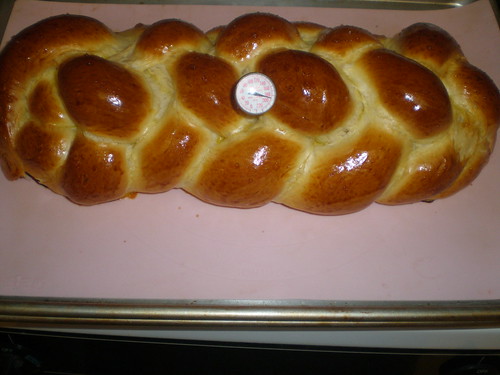
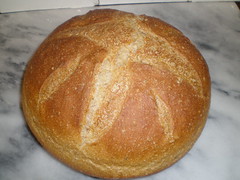
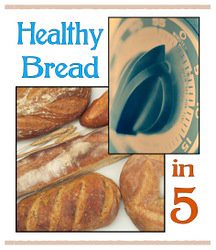
GORGEOUS loaves, each and every one! Never tried a 6-braid before but it's on the list!
ReplyDeleteHi Michelle,
ReplyDeleteA 6-braid isn't really that hard, just hard to remember how. I always use a cheat sheet:
http://www.thefreshloaf.com/node/10130/six-strand-braiding-easy
This definitely looks like a fantastic challah! I am quite impressed with your 6-braid...but then again I thought that a 3-braid was rough!
ReplyDeleteBeautiful challah. I tried making Glezer's sourdough challah and met with defeat. I will have to try again.
ReplyDeleteGreat instructions and pics! I have been making challah for the last year, and I can never get it quite right. My challah's are either to dry, dense or bland! It is so frustrating! I have tried sooo many recipes and all are "not quite it". Lately my challah has started separating and flattening out so the braid is hardly there...but I feel if I give it more flour it becomes dry and dense!
ReplyDeleteI don't use a scale...just measuring cups. Do you think this is part of the problem keeping me and my family from fabulous Shabbat Challah?